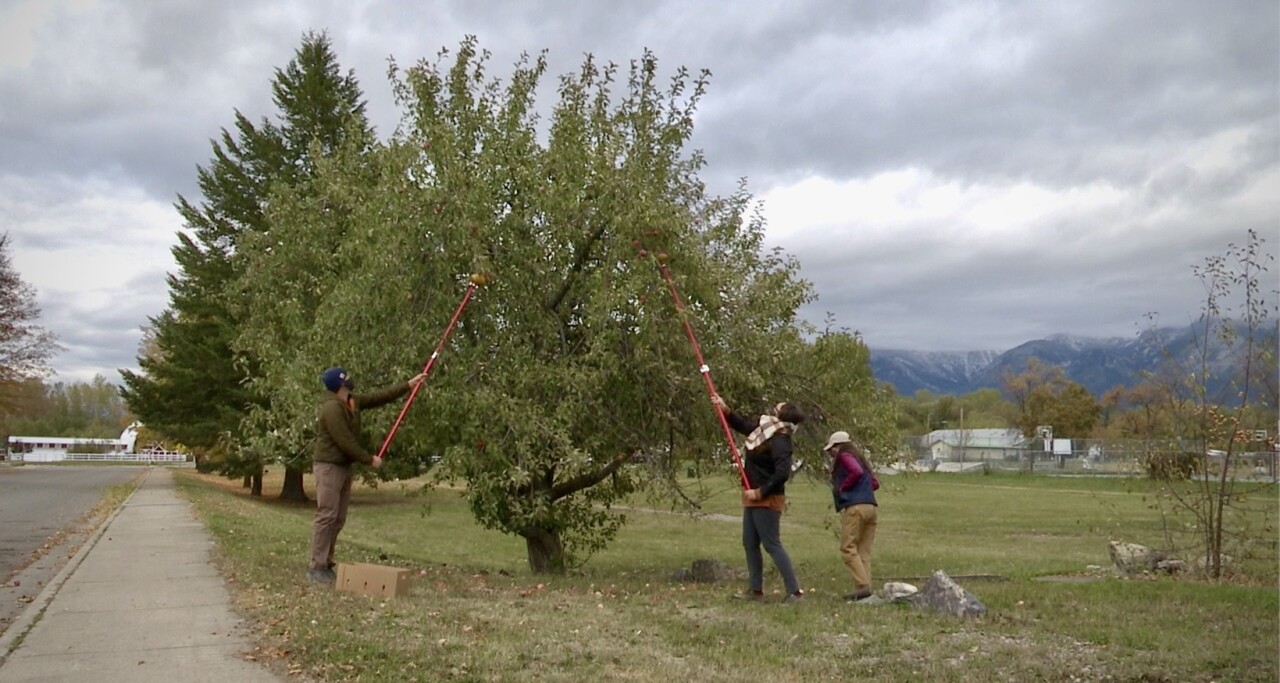ST. IGNATIUS — A new program on the Flathead Reservation is helping communities prevent bear conflict through fruit gleaning.
According to People and Carnivores Program Assistant Stephanie Barron, studies have shown that after trash, fruit is generally the second most common reason why bears come into conflict with people.
"It's one that's just not talked about as much as trash because I think trash is really obvious, and it has maybe a more straightforward solution," Barron explained.
While securing trash may look like fencing or locked containers, an important next step for bear conflict mitigation is gleaning, or picking fruit bit by bit from residential trees. This fall, the first Confederated Salish and Kootenai Tribes Fruit Gleaning program launched to promote that strategy.

"It kind of just has really come to fruition and it's been really successful," Kari Eneas, wildlife biologist for CSKT's Division of Fish, Wildlife, Recreation and Conservation, told MTN News.
This time of year, bears need to put on weight to prepare for hibernation, and "everything and anything that they can eat to fatten up and prepare for the winter, and fruit trees are literally easy pickings," Barron said.
Bears have an incredible sense of smell, so removing sources of food near homes greatly increases safety for residents. Leaving attractants near human dwellings can instill dangerous behavior in bears. That's something these grizzly bear conflict specialists want to avoid.
"As much as we love living in Montana, like living with bears and having them on our landscapes and ecosystems, you know, we want to be safe and we want the bears to be safe as well. So yeah, programs like this really facilitate coexistence in that way," Barron said.
CSKT’s Fruit Gleaning functions through drop-off sites and online.
Over 2,200 pounds of fruit has been collected at drop-off sites in Polson, Ronan and St. Ignatius in just a couple months. And the Facebook page connects people with fruit trees with community members who would like to pick fruit.
The project also promotes food sovereignty as it feeds the community for free. The produce is redistributed to food banks or to farmers who can feed the damaged and decayed fruit to livestock.
“Our goal is to really not have any waste," Eneas explained, saying that there is no concern of disruption to a bear’s ecosystem.
“We live in an area that has had, you know, legacy apple trees for a long time, you know. It's been really important in Mission Valley bears part of their diet and so they've naturally kind of spread and planted trees in the wild. So there are a lot of wild trees that, you know are okay for bears to be eating," Eneas said.
Fruit collection gear and large boxes are available as part of the program which will likely continue until early November.



